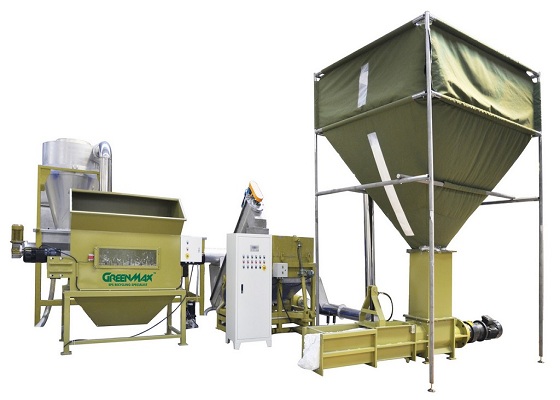Polystyrene foam plastics recycling
Polystyrene is to point to by styrene monomer polymer was synthesized by free radical condensation or PS. It is a colorless transparent thermoplastic plastics, glass transition temperature is higher than 100 degrees Celsius, so often be used to make all kinds of disposable containers need to withstand the temperature of the water, as well as the disposable foam lunch boxes and so on.
Polystyrene foam plastics can be useful in polystyrene bead moulding. Used in home appliances such as foam plastic packaging or frozen food packaging. These plastic products large, large amount of tuition and fees, pay special attention to its recycling in China.
Polystyrene foam plastics recycling main ways are: reduction after granulation, crushing used for all kinds of filling materials, after pyrolysis oil or recovery of styrene and others.

(1) the capacity reduction after granulation, polystyrene foam plastics can melt extrusion granulation of recycled aggregate, but so bulky, defecate transportation, usually during recycling to reduce capacity first. Methods with mechanical method, solvent method and heating method.
(2) is used as the filler after crushing, polystyrene foamed plastic products after grinding can be used as a filler, made from a variety of products. Such as (1) to mold into a foam plastics.
(3) pyrolysis oil or recovery of styrene, waste polystyrene foam plastic pyrolysis oil installation methods are as follows. Polystyrene foamed plastic waste pretreatment reduce styrene distillation for catalytic cracking of heat treatment.
(4) other, waste polystyrene foam plastics can be used in the manufacture of coating and adhesive, etc.
To recycle waste PS foamed plastics modified to take advantage of, can turn, and can avoid the pollution of the environment. Summarize the above points, foam plastic waste 1, can be used as a flame retardant; 2, used as ion exchange resins; 3, the preparation of emulsion paint; 4, preparation of adhesive used in construction; 5, recycling resin; 6, high-temperature pyrolysis into fuel oil; 7, with grafting methyl methacrylate adhesives. 8, direct use.
